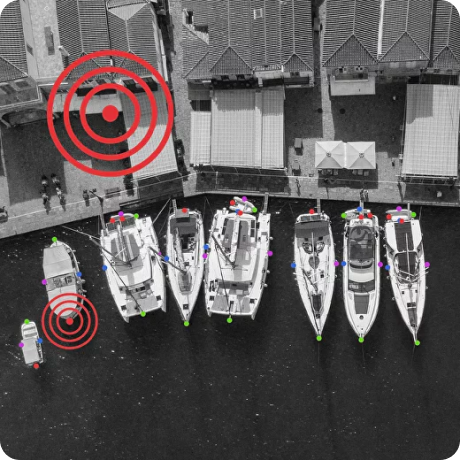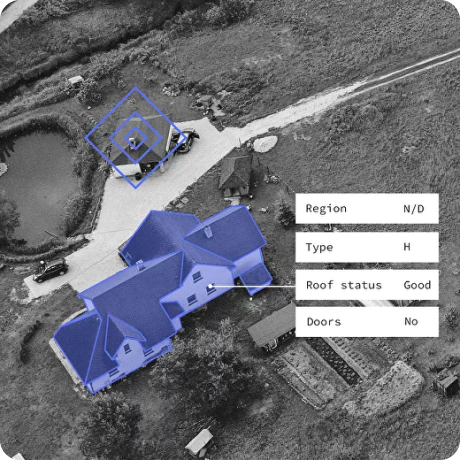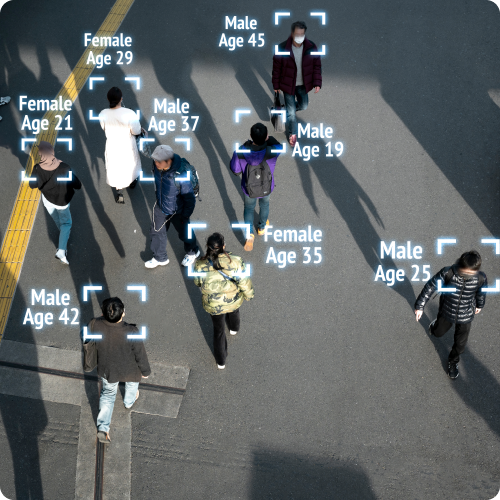VIDEO LABELING SERVICES




What is Video Labeling?
Types of Video Labeling Services
How we Deliver Video Labeling Projects
At Training Data, we follow a systematic approach to deliver Video Labeling Projects with precision, accuracy, and efficiency. Our process comprises several key stages, each meticulously designed to ensure high-quality annotations and client satisfaction.
Video Labeling Use Cases
Surveillance and Security
Companies utilize video labeling data for surveillance and security applications, including monitoring public spaces, securing facilities, and detecting suspicious activities. Video labeling enables the identification of objects, individuals, and behaviors of interest, facilitating real-time threat detection, incident response, and crime prevention.
Autonomous Vehicles and Transportation
In the automotive industry, video labeling data is essential for developing autonomous driving systems, enhancing vehicle safety, and improving transportation efficiency. Video labeling enables the detection and tracking of vehicles, pedestrians, and road signs, enabling autonomous vehicles to navigate complex environments and make informed driving decisions.
Retail and E-commerce
Retailers and e-commerce companies leverage video labeling data to optimize store layouts, analyze customer behavior, and enhance shopping experiences. Video labeling enables the tracking of customer movements, product interactions, and queue lengths, facilitating retail analytics, personalized marketing, and inventory management.
Healthcare and Medical Imaging
In healthcare, video labeling data is used for medical imaging analysis, patient monitoring, and surgical assistance. Video labeling enables the identification and tracking of anatomical structures, pathological changes, and surgical instruments, supporting medical diagnosis, treatment planning, and surgical navigation.
Entertainment and Media
Media and entertainment companies employ video labeling data for content recommendation, video editing, and audience engagement. Video labeling enables the categorization of video content, scene recognition, and sentiment analysis, facilitating personalized content recommendations, targeted advertising, and interactive storytelling.
Education and Training
Educational institutions and training organizations utilize video labeling data for online learning, skill assessment, and instructional content creation. Video labeling enables the annotation of educational videos, learning activities, and student interactions, supporting remote learning, competency evaluation, and curriculum development.
Manufacturing and Industrial Automation
In manufacturing and industrial settings, video labeling data is used for quality control, process monitoring, and predictive maintenance. Video labeling enables the detection of defects, equipment malfunctions, and production anomalies, facilitating automated inspection, fault diagnosis, and productivity optimization.
Sports Analytics and Performance Monitoring
Sports teams and athletic organizations leverage video labeling data for performance analysis, player scouting, and strategy optimization. Video labeling enables the tracking of athlete movements, game events, and performance metrics, supporting tactical planning, talent identification, and athlete development.
Environmental Monitoring and Conservation
Environmental agencies and conservation organizations employ video labeling data for monitoring wildlife habitats, tracking endangered species, and assessing environmental changes. Video labeling enables the identification of flora, fauna, and habitat conditions, facilitating biodiversity conservation, habitat restoration, and environmental impact assessment.
Smart Cities and Urban Planning
Municipalities and urban planners use video labeling data for smart city initiatives, traffic management, and urban development. Video labeling enables the analysis of traffic patterns, pedestrian flows, and urban infrastructure, supporting transportation planning, urban design, and public safety initiatives.
Stages of work
-
Application
/01Leave a request on the website for a free consultation with an expert. Th e acco unt manager will guide you on the services, timelines, and price -
Free pilot
/02We will conduct a test pilot project for you and provide a golden set, based on which we will determine the final technical requirements and approve project metrics -
Agreement
/03We prepare a contract and all necessary documentation upon the request of your accountants and lawyers -
Workflow customization
/04We form a pool of suitable tools and assign an experienced manager who will be in touch with you regarding all project details -
Quality control
/05Data uploads for verification are done iteratively, allowing your team to review and approve collected/annotated data -
Post-payment
/06You pay for the work after receiving the data in agreed quality and quantity
Timeline
-
24 hoursApplication
-
24 hoursConsultation
-
1 to 3 daysPilot
-
1 to 5 daysConducting a pilot
-
1 day to several yearsCarrying out work on the project
-
1 to 5 daysQuality control
in the established quality and quantity
Why
Training Data
- Quality Assurance:
-
Enhanced Data Accuracy
-
Consistency in Labels
-
Reliable Ground Truth
-
Mitigation of Annotation Biases
-
Cost and Time Efficiency
- Data Security and Confidentiality:
-
GDPR Compliance
-
Non-disclosure agreement
-
Data Encryption
-
Multiple data storage options
-
Access Controls and Authentication
- Expert Team:
-
6 years in industry
-
35 top project managers
-
40+ languages
-
100+ countries
-
250k+ assessors
- Flexible and Scalable Solutions:
-
24/7 availability of customer service
-
100% post payment
-
$550 minimum check
-
Variable Workload
-
Customized Solutions








